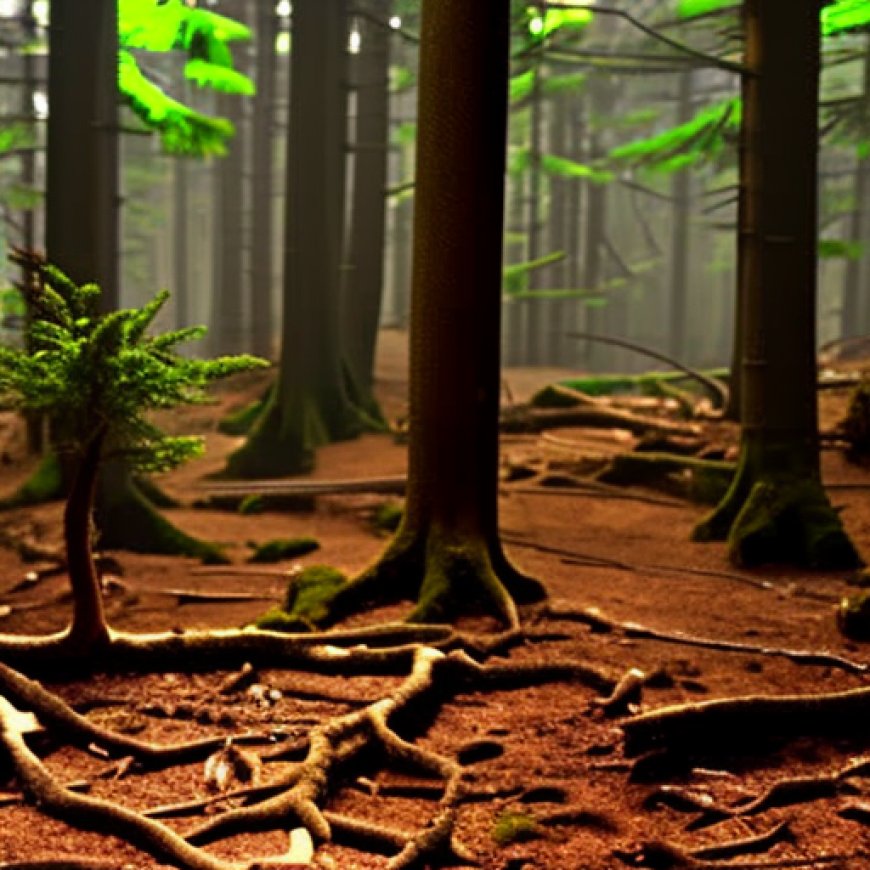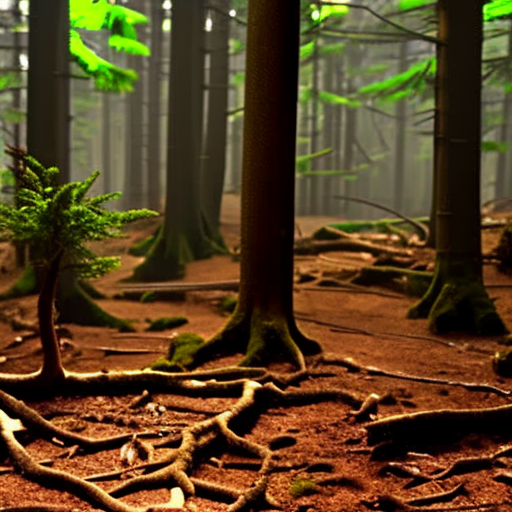Scientists made an incredible discovery about the oldest fossilized forest ever found: ‘Not like any forest you would see today’
Scientists made an incredible discovery about the oldest fossilized forest ever found: 'Not like any forest you would see ... The Cool Down


Researchers Discover World’s Oldest Fossilized Forest
Researchers from the United Kingdom have discovered the world’s oldest fossilized forest, providing insights into the development of life on Earth.
Discovery of the Fossils
- The fossils were found on cliff sides in Minehead off the Somerset coast in England.
- Scientists from the Universities of Cambridge and Cardiff have dated the forest back between 419 million and 358 million years old.
Description of the Forest
- The forest was made up of Calamophyton trees, an early form of today’s palm trees.
- The trees were covered in twig-like structures instead of leaves, and their trunks were hollow in the center.
- The trees stood between two and four meters tall (about 6.5 to 13 feet).
Impact on the Landscape
- The trees shed twigs, creating habitats for various invertebrates on the forest floor.
- There was no undergrowth or grass, but the densely-packed trees had a significant effect on the landscape.
Role of Trees in Stabilizing Riverbanks and Coastlines
- The fossils provide insight into how trees helped stabilize riverbanks and coastlines.
- This particular forest was found on the south bank of the Bristol Channel, an inlet of the Atlantic Ocean.
Significance of the Fossils
- The fossils preserve a key stage in Earth’s development when rivers started to operate differently, becoming the great erosive force they are today.
Comparison with Other Fossilized Forests
- The previous record-holder for the world’s oldest fossilized forest is located in the state of New York.
- The forest in Cairo, New York, is 386 million years old and home to Cladoxylopsids and Archaeopteris tree species.
Importance of Forests
- Forests have been crucial to life on Earth for millions of years.
- Modern forests support a wide range of biodiversity, including different tree species, amphibians, birds, and mammals.
- Trees also play a role in cleaning the air by absorbing harmful gases and releasing clean oxygen.
Sustainable Development Goals (SDGs)
- Forests contribute to several SDGs, including Goal 15: Life on Land, which aims to protect, restore, and promote sustainable use of terrestrial ecosystems.
- Supporting businesses committed to avoiding deforestation is essential for achieving these goals.
- The food industry, in particular, should prioritize sustainable practices to prevent clearing land for agricultural production.
Conclusion
The discovery of the world’s oldest fossilized forest provides valuable insights into Earth’s history and the role of trees in shaping landscapes. Understanding the past can help us make informed decisions to protect and preserve forests for future generations.
SDGs, Targets, and Indicators
-
SDGs Addressed or Connected to the Issues Highlighted in the Article:
- SDG 15: Life on Land
The article discusses the discovery of the world’s oldest fossilized forest, providing insights into how life on land developed. This aligns with SDG 15, which aims to protect, restore, and promote sustainable use of terrestrial ecosystems, sustainably manage forests, combat desertification, halt and reverse land degradation, and halt biodiversity loss.
-
Specific Targets Under the SDGs:
- Target 15.1: By 2020, ensure the conservation, restoration, and sustainable use of terrestrial and inland freshwater ecosystems and their services, in particular forests, wetlands, mountains, and drylands, in line with obligations under international agreements.
- Target 15.2: By 2020, promote the implementation of sustainable management of all types of forests, halt deforestation, restore degraded forests, and substantially increase afforestation and reforestation globally.
- Target 15.5: Take urgent and significant action to reduce the degradation of natural habitats, halt the loss of biodiversity, and protect and prevent the extinction of threatened species.
The targets mentioned above are relevant to the issues highlighted in the article as they emphasize the conservation, restoration, and sustainable use of terrestrial ecosystems (including forests), the promotion of sustainable forest management, and the protection of biodiversity.
-
Indicators Mentioned or Implied in the Article:
- Indicator 15.1.1: Forest area as a proportion of total land area
- Indicator 15.2.1: Progress towards sustainable forest management
- Indicator 15.5.1: Red List Index
The article implies the importance of measuring forest area as a proportion of total land area (Indicator 15.1.1) to assess the extent of forest conservation and restoration efforts. Additionally, the progress towards sustainable forest management (Indicator 15.2.1) and the Red List Index (Indicator 15.5.1) can be used to measure the effectiveness of actions taken to protect biodiversity and prevent species extinction.
Table: SDGs, Targets, and Indicators
| SDGs | Targets | Indicators |
|---|---|---|
| SDG 15: Life on Land | Target 15.1: By 2020, ensure the conservation, restoration, and sustainable use of terrestrial and inland freshwater ecosystems and their services, in particular forests, wetlands, mountains, and drylands, in line with obligations under international agreements. | Indicator 15.1.1: Forest area as a proportion of total land area |
| SDG 15: Life on Land | Target 15.2: By 2020, promote the implementation of sustainable management of all types of forests, halt deforestation, restore degraded forests, and substantially increase afforestation and reforestation globally. | Indicator 15.2.1: Progress towards sustainable forest management |
| Target 15.5: Take urgent and significant action to reduce the degradation of natural habitats, halt the loss of biodiversity, and protect and prevent the extinction of threatened species. | Indicator 15.5.1: Red List Index |
Behold! This splendid article springs forth from the wellspring of knowledge, shaped by a wondrous proprietary AI technology that delved into a vast ocean of data, illuminating the path towards the Sustainable Development Goals. Remember that all rights are reserved by SDG Investors LLC, empowering us to champion progress together.
Source: thecooldown.com

Join us, as fellow seekers of change, on a transformative journey at https://sdgtalks.ai/welcome, where you can become a member and actively contribute to shaping a brighter future.







